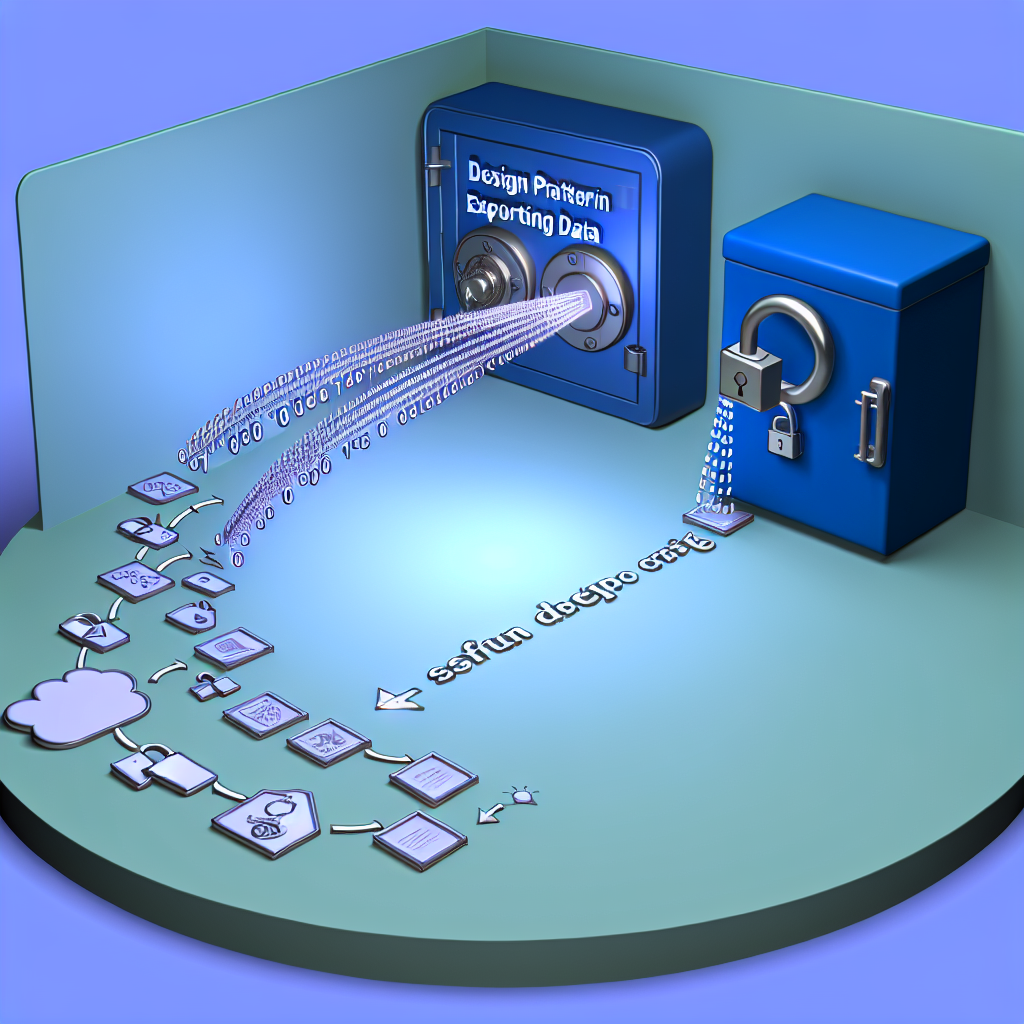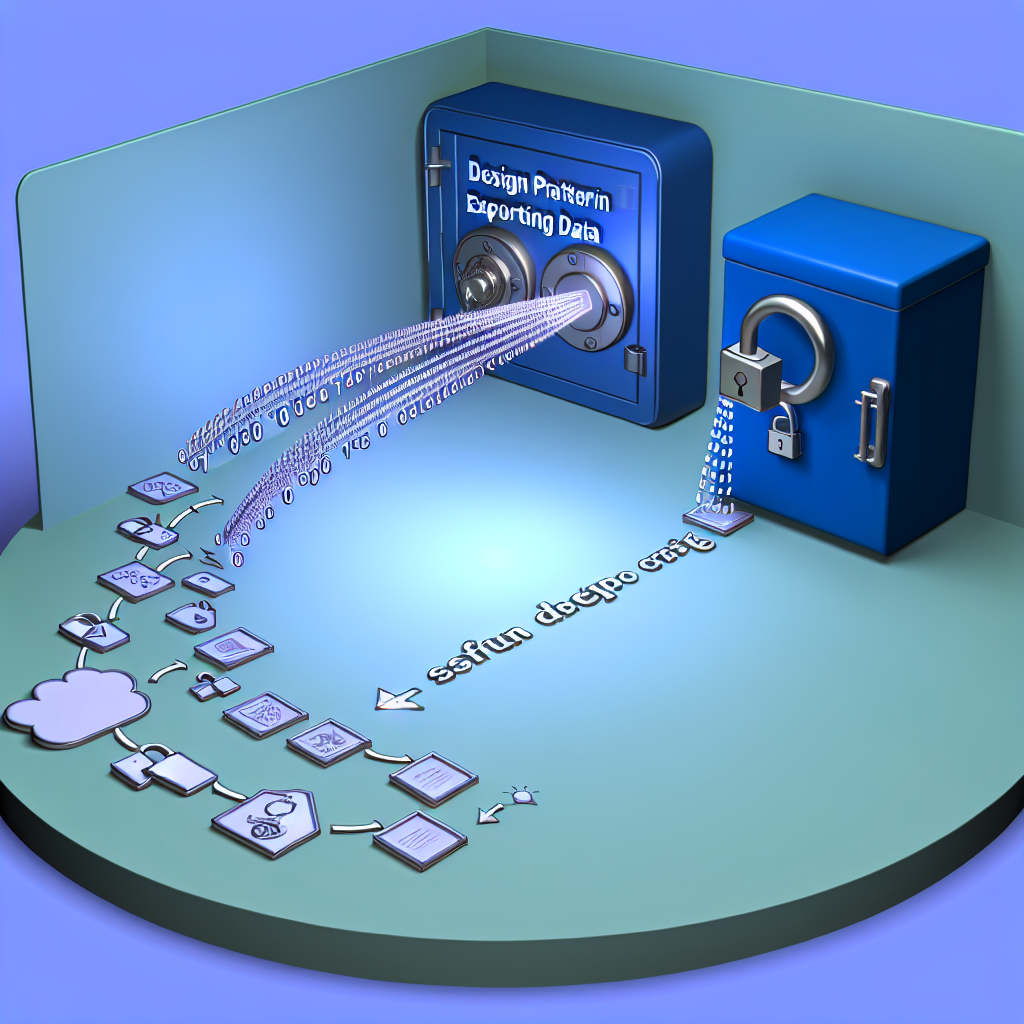Many organizations must communicate with external parties, transferring data across various boundaries. However, facilitating this process safely while preventing the unauthorized disclosure of sensitive data poses significant challenges.
This guide outlines an architecture pattern designed to enable data sharing while protecting the integrity of your core networks and systems.
Establishing a Comprehensive Export Solution
This guide is divided into two main sections. The first focuses on the foundational techniques inherent in the architecture pattern. The second section delves into the specific design of an export solution, utilizing these techniques.
1. Techniques within the Safe Data Export Framework
The safe data-export framework comprises four fundamental techniques that work in cohesion to create an end-to-end export solution.
Regulating Information Release
Eliminating Hidden Data in Documents
Protecting Against Network Attacks
2. Design and Administration of the Export Solution
Employing the safe data-export framework demands thoughtful design, construction, and ongoing monitoring of your export solution.
Regulating Information Release
Effective regulation of information release necessitates both suitable policy and technical measures. These should strike a balance between safeguarding sensitive information and facilitating efficient information sharing.
Risks to Address
Without appropriate controls for authorizing information release, users may inadvertently or deliberately export information meant solely for internal access.
Depending on the information’s nature, this oversight could result in reputational harm or financial loss, among other consequences.
Defensive Strategies
A well-defined release authorization policy is essential for determining which information assets are appropriate for external sharing.
Your policy should consider various factors, including:
- Information Type – Different data categories may hold varying significance for your organization.
- Source – Understanding where the information originated.
- Destination – Assessing the trustworthiness of the recipient’s IT system and their data handling practices, potentially necessitating an information sharing agreement.
- Requesting Entity – If the user (or automated system) is authenticated, their identity can factor into your release decision.
- Multiple Authorizations – Sometimes additional approvals may be required from a different employee, manager, or the information owner.
- Classification – Certain classifications might indicate that a document is too sensitive for release to a particular destination.
- Volume Limits – Exceeding expected release volumes could indicate a potential security breach.
Once your policy is established, you should determine how much to enforce technically versus relying on user behavior and oversight.
It may not be feasible to enforce every aspect of your policy using technology. In fact, overly stringent technical controls could inhibit legitimate business processes by blocking acceptable information sharing.
Practical Recommendations

-
Avoid Releasing Information to Incorrect Recipients
Make it clear who the intended recipient is and which system they are using (corporate versus personal accounts).
-
Establish a Dual Authorization Process for Information Release
Assess the feasibility of this during non-working hours, allowing users to release information autonomously while notifying their managers if necessary.
-
Implement Classification Markings
Ensure robust training and tools are available to help users correctly label information requiring extra protection.
-
Automatic Information Release
Develop a testing regime to verify that the system functions as intended, ensuring no accidental leaks occur.
-
Fine-tune Rate Limiting
Consider user-specific rate limits for improved efficiency.
-
Balance Export Controls with Broader Risks
Account for user capabilities such as printing, taking photographs, and copy-pasting, as excessive export restrictions can lead to the rise of ‘shadow IT,’ jeopardizing governance and control.
Eliminating Hidden Data in Documents
Modern file formats are intricate, often containing numerous hidden fields and variables. Consequently, users risk unintentionally disclosing sensitive information that is not immediately visible.
Risks to Manage
Documents exported from a network may retain additional information that is not apparent to the user, including sensitive business data. For example, an Office document could contain tracked changes, comments, or author details. The inadvertent release of such hidden data could lead to severe data breaches.
Defensive Techniques
To prevent this type of data exposure, it is necessary to eliminate hidden information before sending documents beyond your organizational boundaries.
Two methods for achieving this include:
- Sanitization – Inspecting documents and removing concealed information.
- Format Transformation – Converting documents to different file types may eliminate hidden information, especially when using print-friendly formats that discard tracking changes and undo history.
Be aware that users may require certain functionalities (e.g., tracked changes or comments) when sharing documents. Therefore, optional controls that permit retaining such features should be considered.
Providing comprehensive user training is crucial for making informed decisions while prioritizing security. Users should also have the opportunity to preview converted documents before sending to ensure that the conversion does not alter the document’s meaning or format.
Protecting Against Network Attacks
Effectively controlling information release involves implementing suitable policies and technical measures. Potential attacks could originate from either external systems or as command and control for malware within the organizational framework.
Risks to Manage
An export solution’s requirement for end-to-end network connectivity renders it a viable target for network-based attacks.
Two potential attack vectors using the export channel include:
- Exploiting the export channel to facilitate initial compromise.
- Using the export channel to steal data or as a command control pathway once the network is compromised by other vulnerabilities.
Defensive Techniques
The following strategies can mitigate network attack risks:
- Flow Control – Employing data diodes allows only one-way communication through the export solution, preventing external attackers from utilizing the channel for malware-related communication.
- Release Control – Connecting release authorization processes with the export channel to protect against unauthorized access, often implemented with channel authentication or digital signatures for each object.
- Proof of Human Control – Ensuring the export request originates from a human rather than malware, possibly verified through a code input from a TOTP token.
Detecting Concealed Data
Identifying data that malware may conceal within a legitimate export can be exceptionally challenging, as there are numerous subtle encoding methods.
When deploying an export solution, it’s important to recognize the inherent risk of malware present within your system potentially hiding data within legitimate exports. This concern is distinct from the accidental inclusion of hidden data discussed earlier.
Securing Data for Recipients
Encryption plays a vital role in ensuring the data being exported is safeguarded until it reaches its intended recipient.
Risks to Manage
If data released from a system lacks encryption, unauthorized individuals intercepting the communication can access its contents.
Defensive Techniques
There are two primary methods for encrypting information leaving an export solution:
- Data-in-Transit Encryption – Technologies like Transport Layer Security (TLS) encrypt the communication channel over which the data is transmitted.
- Object Encryption – Encrypting each data item individually for the designated recipient.
In many scenarios, data-in-transit protection suffices. However, in higher-risk situations, object encryption provides additional security by safeguarding the data before it traverses flow control. This ensures that even if external components of the export solution are compromised, attackers cannot access the released data.
System Design Considerations
While the specific design of an end-to-end export solution may vary, certain core considerations regarding the arrangement of components and techniques are essential for effective implementation.
Stages of the Export Process
The data export process is delineated into three interconnected stages.
The flow of data includes the following steps:
- A Document or Data Object export is initiated from the Source System.
- Sanitization is conducted to eliminate hidden information. This process may require user input to adjust the sanitization level.
- Release Authorization occurs to verify that the document is suitable for export. This should consider several factors as described previously and may incorporate one or more reviews from human stakeholders.
- If Release Authorization is successful, the document is then Encrypted.
- Signing the document for Release Control may follow if necessary.
- The Document is relayed to the Release Control, which checks the signature to ensure authorization before proceeding to Flow Control.
- Flow Control should always precede Release Control to guarantee that only data qualifying for Release Authorization is transmitted to the External Proxy.
- The External Proxy is assigned to convey the document to the Destination System.
Architectural Variants
Several valid architectural variants should be assessed by system designers:
- Coupling Release Authorization and Release Control – This may involve direct sequential connections instead of relying on object signing or channel authentication.
- Aspects of Release Authorization, Encryption, and Signing may occur within the Source System, such as workflows in document management systems, while ensuring that Release Control can ascertain successful Release Authorization.
- If the export solution is paired with an import solution for two-way communication, precautions must be taken to prevent a bi-directional attack. An intruder could breach internal systems via the import channel and then use the export channel to extract or feedback data.
Monitoring and Managing an End-to-End Export Solution
It’s crucial to monitor your export solution to verify its functionality. A robust management system will support this objective.
Management Strategies
To manage the solution effectively, consider the following:
- Ensure the system is easily and quickly patchable.
- Separately manage the administrative functions, safeguarding them against internal system compromises.
- Ensure that management of components situated after the Flow Control (like the External Proxy) is distinctive from the management of other elements since these external components are more susceptible to breaches.
Monitoring Strategies
Monitoring is key to maintaining effective export control:
- The monitoring system must be independent from management functionalities.
- Collect logs from all solution components and direct them to the monitoring system.
- Recording all outbound data may be warranted, though this could necessitate additional safeguards.
- Analyze logs for indications of users misusing the system or sending out unauthorized data. Utilize analytics to identify anomalies in export behaviors.
- Ensure log analysis can highlight incongruent events across components that typically do not occur, such as releasing documents that lack Release Authorization.
- Establish network monitoring to detect potential threats before they penetrate your network boundaries.
Conclusion
A well-structured export solution enables organizations to share information securely without jeopardizing IT systems further.
Human Intervention
<ptraditionally, the="" export="" of="" data="" requires="" human="" engagement.="" throughout="" design="" phase,="" you="" should="" evaluate="" how="" effectively="" system="" aligns="" with="" your="" organizational="" culture="" and="" practices="" to="" ensure="" it="" mitigates="" unintended="" exports="" without="" provoking="" negative="" behaviors="" aimed="" at="" circumventing="" it.
Balanced Approach to Export Controls
Export controls within IT systems ought to be proportionate to the broader environmental risks, such as user capabilities to print, use smartphones, or copy data into other documents. Overly restrictive export measures may foster ‘shadow IT,’ consequently undermining governance and oversight.
Ultimately, export systems should facilitate collaboration and sharing, rather than complicating the process.
Based on an article from www.ncsc.gov.uk: https://www.ncsc.gov.uk/guidance/design-pattern-safely-exporting-data





